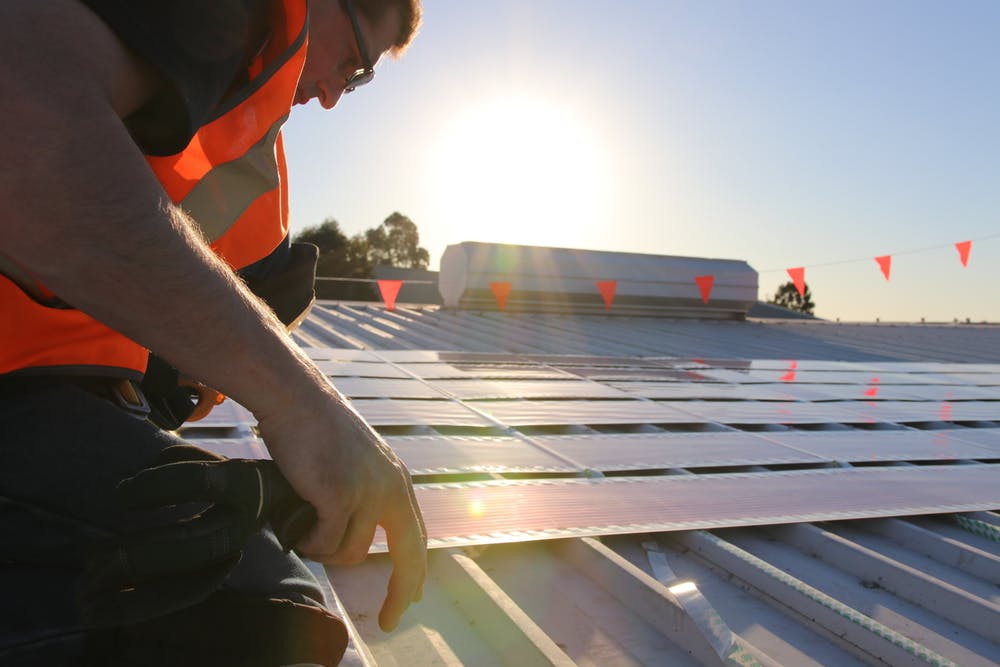The 200 square metre array was installed in just one day by a team of five people. No other energy solution is as lightweight, as quick to manufacture, or as easy to install on this scale.
Our research team manufactured the solar modules using standard printing techniques; in fact, the machine that we use typically makes wine labels. Each solar cell consists of several individual layers printed on top of each other, which are then connected in series to form a bank of cells. These cells are then connected in parallel to form a solar module.
Since 1996, we have progressed from making tiny, millimetre-sized solar cells to the first commercial installation. In the latest installation each module is ten metres long and sandwiched between two layers of recyclable plastic.
At the core of the technology are the specialised semiconducting polymer-based inks that we have developed. This group of materials has fundamentally altered our ability to build electronic devices; replacing hard, rigid, glass-like materials such as silicon with flexible inks and paints that can be printed or coated over vast areas at extremely low cost.
As a result, these modules cost less than A$10 per square metre when manufactured at scale. This means it would take only 2-3 years to become cost-competitive with other technologies, even at efficiencies of only 2-3%.
These printed solar modules could conceivably be installed onto any roof or structure using simple adhesive tape and connected to wires using simple press-studs. The new installation at Newcastle is an important milestone on the path towards commercialisation of the technology – we will spend the next six months testing its performance and durability before removing and recycling the materials.
We think this technology has enormous potential. Obviously our technology is still at the trial stage, but our vision is a world in which every building in every city in every country has printed solar cells generating low-cost sustainable energy for everyone. This latest installation has brought the goal of solar roofs, walls and windows a step closer.
Ultimately, we imagine that these solar cells could even benefit those people who don’t own or have access to roof space. People who live in apartment complexes, for example, could potentially sign up to a plan that lets them pay to access the power generated by cells installed by the building’s owner or body corporate, and need never necessarily “own” the infrastructure outright.
But in a fractured and uncertain energy policy landscape, this new technology is a clear illustration of the value of taking power into one’s own hands.
This article was originally published in The Conversation.
This content is protected by copyright and may not be reused. If you want to cooperate with us and would like to reuse some of our content, please contact: editors@pv-magazine.com.








By submitting this form you agree to pv magazine using your data for the purposes of publishing your comment.
Your personal data will only be disclosed or otherwise transmitted to third parties for the purposes of spam filtering or if this is necessary for technical maintenance of the website. Any other transfer to third parties will not take place unless this is justified on the basis of applicable data protection regulations or if pv magazine is legally obliged to do so.
You may revoke this consent at any time with effect for the future, in which case your personal data will be deleted immediately. Otherwise, your data will be deleted if pv magazine has processed your request or the purpose of data storage is fulfilled.
Further information on data privacy can be found in our Data Protection Policy.